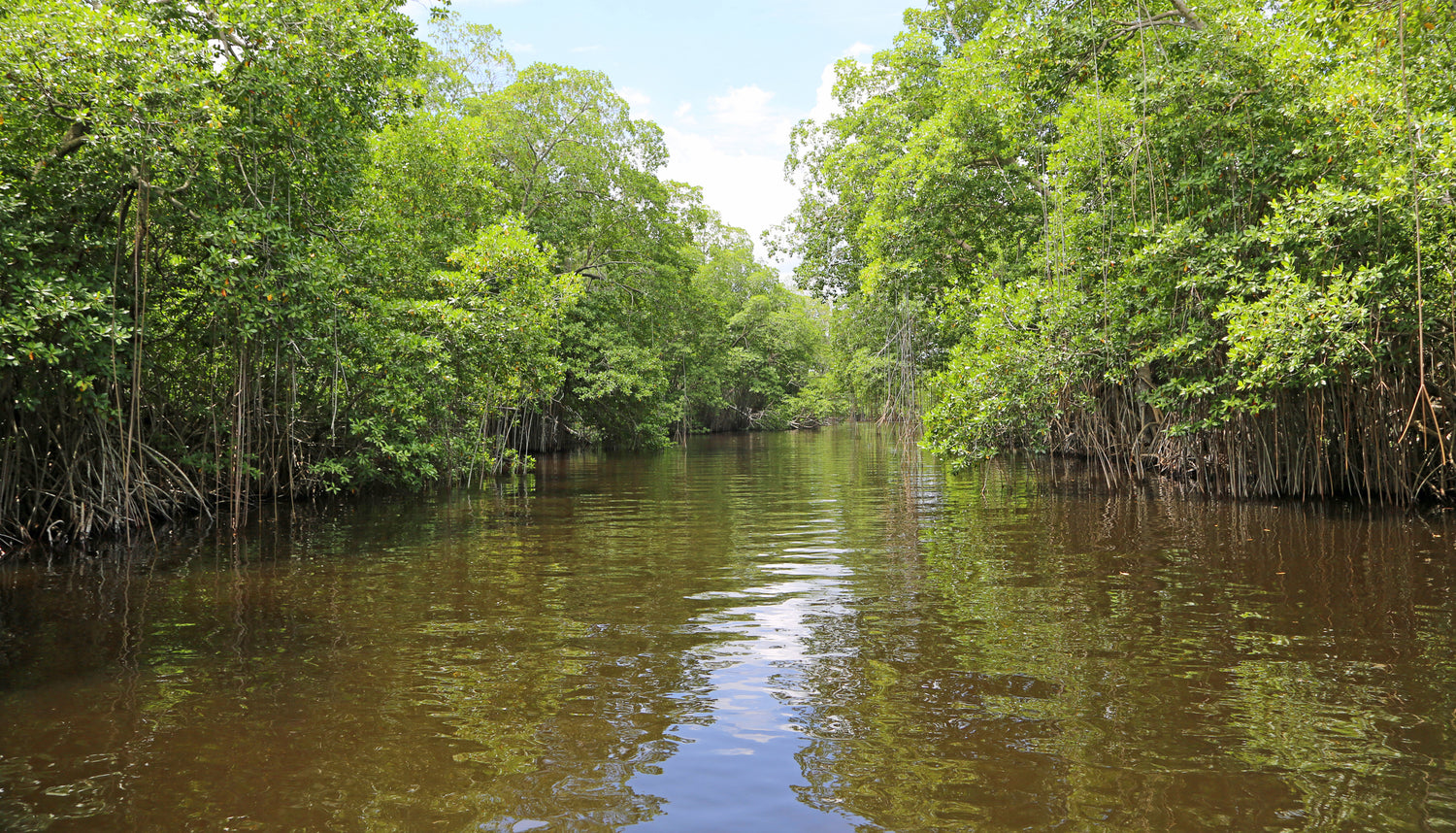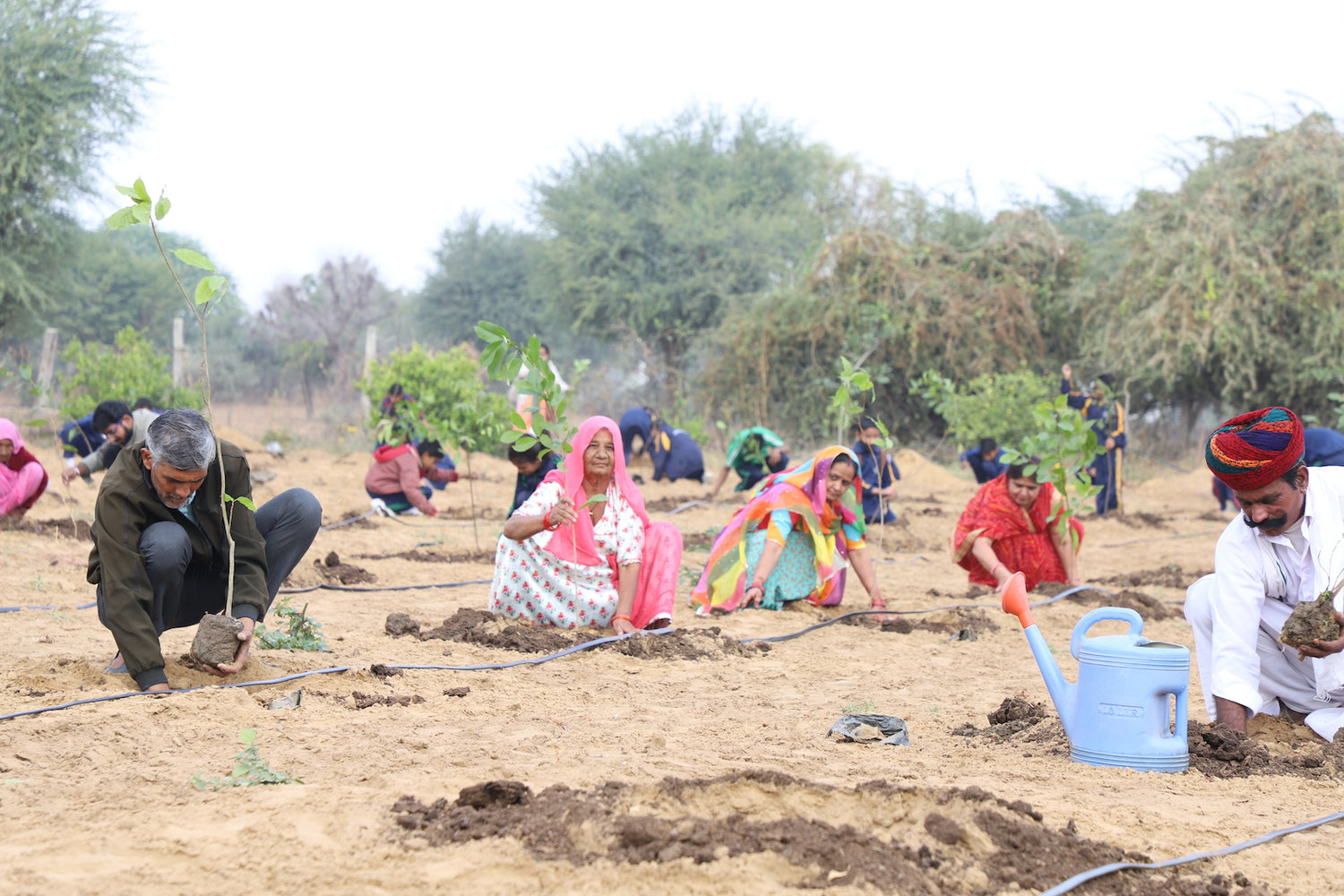Mangroves in Visakhapatnam: Coastal Biodiversity Along Andhra’s Shores
Visakhapatnam, often referred to as the “City of Destiny,” is not only known for its picturesque beaches and bustling port but also for its thriving m Read more
Connect with us
-
👥 Corporates
If you are looking for:
- 🌲 Tree Plantation Events
- 📊 CSR Projects
📧 corporate@growbilliontrees.com
📞 +91 9699723523
💬 +91 9325931304 WhatsApp (Only)
🕒 Mon - Sat | 10am - 7pm IST
-
🧩 Tree Plantation NGOs
If you are looking for:
- 💰 Financial Assistance
- 🤝 Operational Support
📧 support@growbilliontrees.com
📞 +91 9699723523
💬 +91 9325931304 WhatsApp (Only)
🕒 Mon - Sat | 10am - 7pm IST
-
🌼 Individuals
If you are looking for:
- 👥 Group Tree Plantation Drive
- 🌳 Bulk Tree Plantation
📞 +91 9699723523
💬 +91 9325931304 WhatsApp (Only)
🕒 Mon - Sat | 10am - 7pm IST
Trending
Trees for Corporates
Mangroves in Visakhapatnam: Coastal Biodiversity Along Andhra’s Shores
Visakhapatnam, often referred to as the “City of Destiny,” is not only known for its picturesque beaches and bustling port but also for its thriving mangrove ecosystems.
These mangroves, nestled along Andhra Pradesh’s coastline, are vital for maintaining ecological balance, supporting biodiversity, and protecting against natural disasters.
Despite their crucial role, Visakhapatnam’s mangroves face mounting threats from urbanization and climate change, making their conservation more important than ever.
Historical and Cultural Significance
Mangroves in and around Visakhapatnam have long supported local fishing communities, serving as breeding grounds for fish and crabs.
Historically, they acted as natural shields against tidal waves, protecting coastal settlements.
The mangroves in the Godavari and Krishna delta regions, which extend towards Visakhapatnam, have been referenced in ancient texts for their abundant resources and ecological importance.
Ecological Importance
1. Cyclone and Flood Protection
Visakhapatnam’s mangroves act as natural buffers, reducing the impact of cyclones and tidal surges. Events like Cyclone Hudhud (2014) demonstrated the importance of these ecosystems in mitigating damage to coastal areas.
2. Carbon Sequestration
Mangroves store more carbon per unit area than most terrestrial forests, making them critical in combating climate change. Their ability to trap CO2 and prevent its release into the atmosphere positions them as key players in environmental resilience.
3. Biodiversity Hotspot
The mangroves in Visakhapatnam are home to a diverse range of species, including mudskippers, crabs, herons, and flamingos. These ecosystems also support marine life by providing nurseries for fish and crustaceans.
4. Water Filtration
Mangroves improve water quality by trapping sediments and filtering pollutants. This natural filtration supports healthier coastal ecosystems and benefits aquatic life.
Fun Facts About Visakhapatnam’s Mangroves
- Mudskipper Mania: Visakhapatnam’s mangroves are home to mudskippers, fish that can walk on land and breathe through their skin.
- Flamingo Flocks: During migration seasons, flamingos flock to the city’s mangroves, turning the area into a bird-watching paradise.
- Mangrove Diversity: Key species include Avicennia marina and Rhizophora mucronata, which thrive in saline and brackish waters.
Environmental Challenges
-
Urbanization and Industrial Development The expansion of Visakhapatnam as a port city has led to the destruction of mangrove forests to make way for infrastructure and industrial zones.
-
Pollution Mangroves are threatened by untreated sewage, plastic waste, and industrial effluents entering coastal waters.
-
Climate Change Rising sea levels and increased salinity due to climate change jeopardize the growth and regeneration of mangroves.
-
Lack of Awareness Despite their importance, mangroves often receive little attention in conservation discussions, leading to neglect and mismanagement.
Grow Billion Trees: Protecting Visakhapatnam’s Mangroves
Grow Billion Trees is a leading organization in mangrove conservation and restoration efforts in Visakhapatnam.
By combining community engagement, innovative strategies, and technological tools, the organization ensures these ecosystems thrive for generations to come.
Collaborations
- Partnering with Andhra Pradesh Forest Department and local NGOs to execute large-scale mangrove restoration projects.
- Collaborating with academic institutions to study mangrove biodiversity and monitor ecosystem health.
Execution Strategies
- Establishing nurseries for salt-tolerant mangrove species like Avicennia marina and Sonneratia alba.
- Conducting plantation drives in degraded areas, focusing on restoring mangroves lost to industrial expansion.
- Utilizing drone technology and satellite imagery to track mangrove growth and identify areas needing intervention.
Awareness and Advocacy
- Hosting workshops for schools and local communities to highlight the ecological and economic importance of mangroves.
- Promoting eco-tourism activities like mangrove kayaking and guided bird-watching tours to raise awareness and funds.
- Running social media campaigns to educate the public on the role of mangroves in combating climate change and protecting biodiversity.
Key Achievements by Grow Billion Trees
- Post-Cyclone Restoration: After Cyclone Hudhud, Grow Billion Trees restored over 150 hectares of mangroves in vulnerable areas, creating a long-term buffer against future storms.
- Community-Driven Conservation: Local fishing communities have partnered with the organization to protect mangroves while adopting sustainable practices.
- Eco-Tourism Development: By promoting mangrove tours and bird-watching expeditions, the organization has increased awareness while supporting local livelihoods.
Future Prospects
By 2030, the mangroves in Visakhapatnam can set an example for coastal cities globally.
Expanding mangrove coverage, improving biodiversity, and fostering sustainable practices will enhance the region’s resilience to climate change. Public-private partnerships and community involvement will be pivotal in achieving these goals.
Conclusion
Mangroves in Visakhapatnam are more than just trees—they are nature’s protectors, standing between the city and environmental chaos.
Their role in supporting biodiversity, mitigating climate change, and protecting coastal communities cannot be overstated.
Grow Billion Trees is committed to preserving and expanding these vital ecosystems, combining innovative techniques, community participation, and long-term strategies.
With concerted efforts, Visakhapatnam’s mangroves will continue to thrive as a symbol of resilience and ecological harmony along Andhra’s shores.
Thotlakonda Mangroves
These serene mangroves near the Thotlakonda Buddhist Complex are a blend of nature and history, protecting biodiversity while offering glimpses into the region’s cultural past.
Mudskippers in Visakhapatnam Mangroves
These fish that walk on land are the stars of Visakhapatnam’s mangroves, showcasing the wonders of evolution in Andhra’s coastal biodiversity.
Mangroves as Cyclone Buffers
During storms like Cyclone Hudhud, Visakhapatnam’s mangroves absorbed the brunt of tidal waves, proving themselves as nature’s best disaster managers.
Biodiversity in Visakhapatnam Mangroves
From migratory flamingos to playful crabs, these mangroves are bustling with life, making them a vibrant ecosystem worth preserving.
Mangroves and Carbon Sequestration
Visakhapatnam’s mangroves trap carbon like pros, playing a quiet yet powerful role in combating climate change along Andhra’s shores.
Threats to Mangroves in Visakhapatnam
Industrial development, pollution, and urban sprawl are encroaching on these ecosystems, making conservation efforts a race against time.
Grow Billion Trees in Visakhapatnam
This initiative restores mangroves with community participation and technology, ensuring these coastal protectors thrive for future generations.
Mangroves and Fisheries in Visakhapatnam
Acting as nurseries for fish and crabs, these mangroves sustain the local fishing economy while supporting marine biodiversity.
Mangroves and Eco-Tourism in Visakhapatnam
Kayaking through mangrove forests or spotting flamingos attracts eco-tourists, blending conservation with adventure.
Mangroves and Water Quality
These mangroves act as nature’s filtration system, trapping sediments and pollutants to ensure healthier waters for marine and human life.
Mangroves and Climate Resilience in Andhra
These green warriors stand resilient against rising seas and changing salinity, offering lessons in adaptability and environmental balance.
Community Role in Mangrove Conservation
Local communities are crucial in protecting Visakhapatnam’s mangroves, partnering with Grow Billion Trees for sustainable conservation efforts.
You may like
Corporate Plantations
FAQ
What are the mangroves in Visakhapatnam?
These coastal mangroves are biodiversity hotspots, protecting the city from cyclones and floods while supporting marine life. Grow Billion Trees restores and safeguards these critical ecosystems for a sustainable future.
Why are Visakhapatnam’s mangroves important?
They mitigate floods, store carbon, and sustain fisheries while protecting the coast from erosion. Grow Billion Trees ensures these vital ecosystems thrive through active restoration efforts.
How do mangroves protect against cyclones?
Mangroves absorb storm surges and reduce tidal impacts, acting as natural buffers during cyclones like Hudhud. Grow Billion Trees enhances this protection with reforestation initiatives.
What wildlife thrives in Visakhapatnam’s mangroves?
From mudskippers to flamingos, these mangroves are teeming with life. Grow Billion Trees works to preserve these vibrant habitats for biodiversity.
How do mangroves support Visakhapatnam’s fisheries?
Acting as nurseries for fish and crabs, these mangroves boost the local fishing economy. Grow Billion Trees restores degraded areas to ensure sustainable marine resources.
What threats do Visakhapatnam’s mangroves face?
Industrial expansion, pollution, and rising sea levels threaten these ecosystems. Grow Billion Trees addresses these challenges with restoration and community-driven conservation efforts.
What is Grow Billion Trees doing for Visakhapatnam’s mangroves?
We plant mangroves, engage local communities, and monitor ecosystems using technology, ensuring long-term health and sustainability for these vital forests.
How do mangroves combat climate change in Visakhapatnam?
They store significant amounts of carbon and protect against rising seas, making them climate warriors. Grow Billion Trees scales up restoration to amplify these benefits.
Why are Thotlakonda mangroves special?
These mangroves near Thotlakonda blend ecological significance with cultural heritage, protecting biodiversity while offering serene eco-tourism opportunities. Grow Billion Trees ensures their preservation.
How do mangroves benefit eco-tourism in Visakhapatnam?
Activities like kayaking and bird-watching in these mangroves attract eco-tourists while raising awareness about conservation. Grow Billion Trees promotes sustainable tourism in these areas.
What makes Visakhapatnam’s mangroves unique?
Thriving amidst urban and industrial expansion, these mangroves balance biodiversity with development. Grow Billion Trees works to protect their unique ecological role.
Can communities help conserve Visakhapatnam’s mangroves?
Absolutely! Local communities are essential in protecting these ecosystems. Grow Billion Trees empowers them with resources and training for sustainable restoration efforts.























